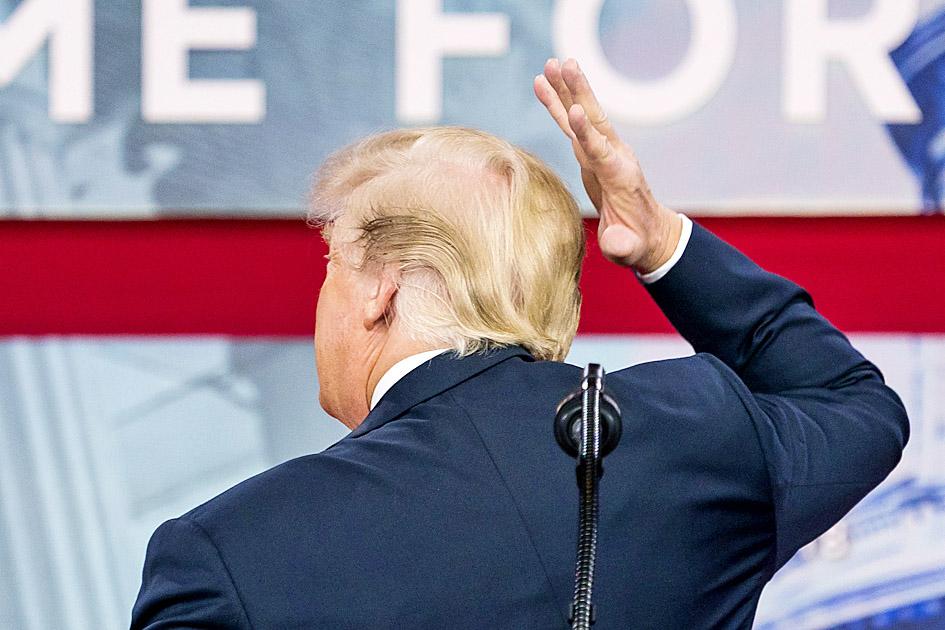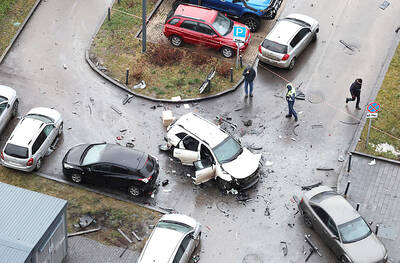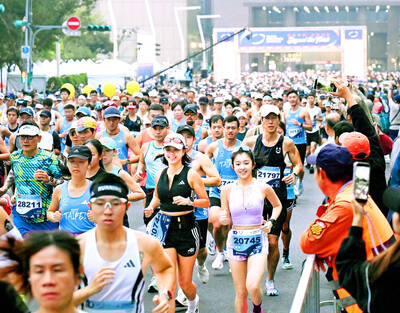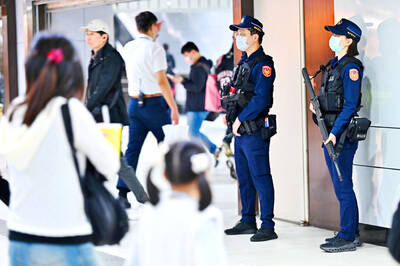US President Donald Trump paid just US$750 in federal income taxes the year he ran for president and in his first year in the White House, a report in the New York Times (NYT) said.
Trump, who has fiercely guarded his tax filings and is the only president in modern times not to make them public, paid no federal income taxes in 10 of the past 15 years.
The details of the tax filings published on Sunday complicate Trump’s description of himself as a shrewd and patriotic businessman, revealing instead a series of financial losses and income from abroad that could come into conflict with his responsibilities as president.

Photo: EPA-EFE
The president’s financial disclosures indicated he earned at least US$434.9 million in 2018, but the tax filings reported a US$47.4 million loss.
The tax filings also illustrate how a reputed billionaire could pay little to nothing in taxes, while someone in the middle class could pay substantially more than him.
About half of Americans pay no income taxes, primarily because of how low their incomes are. However, US Internal Revenue Service figures indicate that the average tax filer paid about US$12,200 in 2017, about 16 times more than what Trump paid.
The disclosure, which the NYT said comes from tax return data it obtained extending over two decades, comes at a pivotal moment ahead of the first presidential debate today and weeks before a divisive election against US Democratic presidential candidate Joe Biden.
Speaking at a news conference on Sunday at the White House, Trump dismissed the report as “fake news” and maintained he has paid taxes, though he gave no specifics.
He also vowed that information about his taxes “will all be revealed,” but offered no timeline for the disclosure. He had made similar promises during his 2016 presidential campaign, but he never followed through.
Instead, he has fielded court challenges against those seeking access to his returns, including the US House of Representatives, which is suing to get Trump’s tax returns as part of congressional oversight.
During his first two years as president, Trump received US$73 million from foreign operations, which in addition to his golf properties in Scotland and Ireland included US$3 million from the Philippines, US$2.3 million from India and US$1 million from Turkey, among other nations.
The president in 2017 paid US$145,400 in taxes in India and US$156,824 in the Philippines, compared with just US$750 in US income taxes. The NYT said the tax records did not reveal any unreported connections to Russia.
Trump found multiple ways to reduce his tax bills. He has taken tax deductions on personal expenses, such as housing, aircraft and US$70,000 to style his hair while he filmed The Apprentice. Losses in the property businesses solely owned and managed by Trump appear to have offset income from his stake in The Apprentice and other entities with multiple owners.
During the first two years of his presidency, Trump relied on business tax credits to reduce his tax obligations. The report said US$9.7 million of business investment credits that were submitted after Trump requested an extension to file his taxes allowed him to offset his obligations and pay just US$750 each in 2016 and 2017.

TRAGEDY STRIKES TAIPEI: The suspect died after falling off a building after he threw smoke grenades into Taipei Main Station and went on a killing spree in Zhongshan A 27-year-old suspect allegedly threw smoke grenades in Taipei Main Station and then proceeded to Zhongshan MRT Station in a random killing spree that resulted in the death of the suspect and two other civilians, and seven injured, including one in critical condition, as of press time last night. The suspect, identified as a man surnamed Chang Wen (張文), allegedly began the attack at Taipei Main Station, the Taipei Fire Department said, adding that it received a report at 5:24pm that smoke grenades had been thrown in the station. One man in his 50s was rushed to hospital after a cardiac arrest

A car bomb killed a senior Russian general in southern Moscow yesterday morning, the latest high-profile army figure to be blown up in a blast that came just hours after Russian and Ukrainian delegates held separate talks in Miami on a plan to end the war. Kyiv has not commented on the incident, but Russian investigators said they were probing whether the blast was “linked” to “Ukrainian special forces.” The attack was similar to other assassinations of generals and pro-war figures that have either been claimed, or are widely believed to have been orchestrated, by Ukraine. Russian Lieutenant General Fanil Sarvarov, 56, head

SAFETY FIRST: Double the number of police were deployed at the Taipei Marathon, while other cities released plans to bolster public event safety Authorities across Taiwan have stepped up security measures ahead of Christmas and New Year events, following a knife and smoke bomb attack in Taipei on Friday that left four people dead and 11 injured. In a bid to prevent potential copycat incidents, police deployments have been expanded for large gatherings, transport hubs, and other crowded public spaces, according to official statements from police and city authorities. Taipei Mayor Chiang Wan-an (蔣萬安) said the city has “comprehensively raised security readiness” in crowded areas, increased police deployments with armed officers, and intensified patrols during weekends and nighttime hours. For large-scale events, security checkpoints and explosives

PUBLIC SAFETY: The premier said that security would be tightened in transport hubs, while President Lai commended the public for their bravery The government is to deploy more police, including rapid response units, in crowded public areas to ensure a swift response to any threats, President William Lai (賴清德) said yesterday after a knife attack killed three people and injured 11 in Taipei the previous day. Lai made the remarks following a briefing by the National Police Agency on the progress of the investigation, saying that the attack underscored the importance of cooperation in public security between the central and local governments. The attack unfolded in the early evening on Friday around Taipei Main Station’s M7 exit and later near the Taipei MRT’s Zhongshan